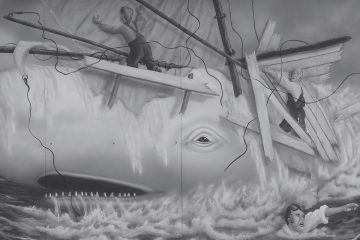What Happened On November 25th?
On November 25, 1952, London’s Ambassadors Theatre hosted the first performance of Agatha Christie’s The Mousetrap. The audience, composed of critics, theater enthusiasts, and prominent figures, eagerly awaited the latest work by the renowned mystery writer. As the plot unfolded in the isolated guesthouse of Monkswell Manor, tensions rose with each twist and turn. The climactic revelation of the murderer left the audience in stunned silence before they erupted into applause. That evening set the stage for what would become the longest-running play in theater history.
Richard Attenborough and Sheila Sim starred as Giles and Mollie Ralston, portraying the couple running the guesthouse with a blend of wit and emotional nuance. Their performances grounded the suspenseful narrative, drawing audiences into the complex relationships and motives of the characters. Critics praised the production’s skillful storytelling and strong cast, predicting it would enjoy a successful run. Few could have foreseen that this one night would begin a record-breaking legacy.
Agatha Christie originally wrote The Mousetrap as a radio drama called Three Blind Mice, which premiered in 1947 to honor Queen Mary’s 80th birthday. She later adapted the story for the stage, changing its title on the advice of her son-in-law, Anthony Hicks, who drew inspiration from Shakespeare’s Hamlet. Christie regarded the play as a modest endeavor, expecting it to run for a few months. Instead, its carefully constructed plot and engaging dialogue drew audiences in ways that exceeded all expectations.
Peter Saunders, a producer with an eye for promising scripts, recognized the potential of The Mousetrap and worked closely with Christie to bring it to the stage. He believed that the confined setting and suspense-driven narrative would resonate with audiences. Attenborough and Sim’s performances brought depth and humor to their roles, helping to establish the play’s enduring appeal. Their dynamic portrayal of the Ralstons set a standard that future casts would emulate.
The play established a tradition of secrecy from its very first performance. At the conclusion of each show, producers asked audiences not to reveal the identity of the murderer. This practice has continued for over 70 years, maintaining the suspense for new theatergoers. Christie also included a clause in the rights agreement specifying that no film adaptation could be made until six months after the play’s West End run ended. Since the production has never closed, no film has been produced, preserving the mystery as an exclusive live experience.
Props from the original 1952 production, including the clock above the fireplace, remain in use today. The production team has carefully preserved these items, which serve as tangible connections to the play’s history. Early programs even featured questionnaires encouraging audience members to guess the identity of the killer, adding an interactive dimension to the experience.
By the 1960s, The Mousetrap had reached audiences in over 50 countries, with translations into more than 20 languages. A notable staging occurred in an Israeli kibbutz, where performers transformed a dining hall into a functional theater. Despite its global reach, the original London production retained its iconic status and achieved the Guinness World Record for the longest-running play.
The play has celebrated many key anniversaries with special events. The 10,000th performance in 1997 included a gala attended by prominent figures in British theater, while the 25,000th performance in 2012 attracted tributes from across the arts. Actors who completed 100 performances received symbolic keys to the theater, a tradition that honors their contributions to the production’s longevity.
The Mousetrap influenced Christie’s later works. She reimagined elements of the play, including character archetypes and psychological conflicts, in subsequent novels. Christie also learned from the play’s success, refining her approach to stagecraft to focus more on audience engagement and theatricality. This shift shaped some of her later stage adaptations and original plays.
Despite its unparalleled success, Christie maintained a modest perspective on the play. She described it as a simple story, contrasting it with her more intricate novels featuring Poirot and Miss Marple. In her will, she left the rights to the play to her grandson, Mathew Prichard, ensuring its management would remain within the family. Under his care, the production has continued to thrive without altering its essence.
The success of The Mousetrap lies in its masterful pacing, tightly constructed plot, and Christie’s ability to keep audiences guessing. The snowbound setting heightened the stakes, isolating the characters and forcing their secrets to the surface. Each clue and revelation was meticulously placed, ensuring that the story held the audience’s attention until the final moment. Over seven decades after its premiere, the play continues to draw theatergoers from around the world, proving its timeless appeal as a masterpiece of suspense and storytelling.





